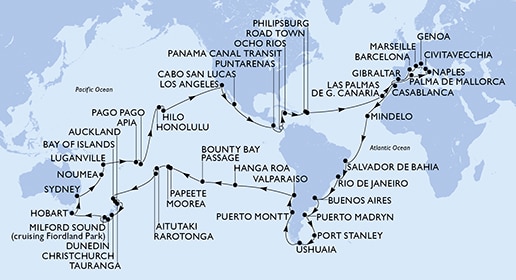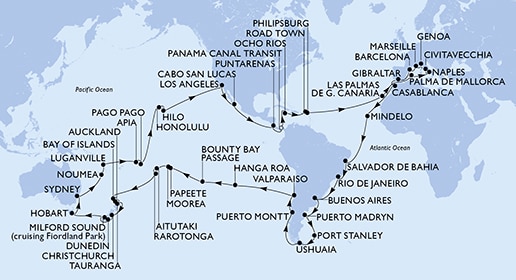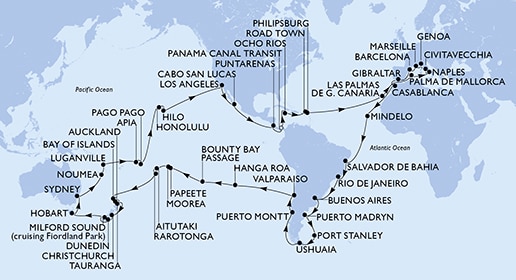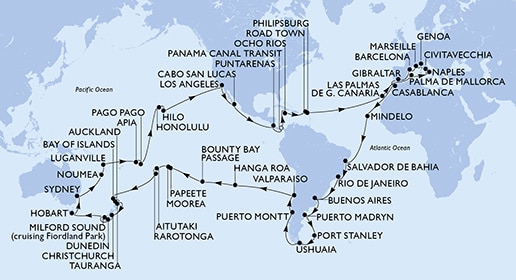
Port Valparaiso
Valparaiso, a major city in Chile, is a vital port in the global cruise industry. It serves as a key gateway for cruise ships journeying between the Atlantic and Pacific Oceans via the Panama Canal. The city's historic quarter, a UNESCO World Heritage site, is an added attraction for cruise ship passengers.
The cruise season in Valparaiso typically runs from October to April, during which numerous ships dock at its port. These cruise ships not only bring a significant number of tourists to the city, contributing to its local economy, but also participate in various cultural and entertainment activities organized specifically for the cruise passengers, further promoting Valparaiso's rich cultural heritage.
History
One of the South Pacific's most important seaports, Valparaiso in Chile, was discovered in 1536 by Spanish conquistador Juan de Saavedra. Its name, which translates to "Paradise Valley," was given by Saavedra in homage to his birthplace in Spain. The port was developed in the late 19th century, following Chile's independence from Spain, and quickly became a vital stopover point for ships traveling between the Atlantic and Pacific oceans via the Straits of Magellan.
In the 20th century, the opening of the Panama Canal in 1914 led to a decline in Valparaiso's importance as a maritime route, as ships could now bypass the treacherous Straits of Magellan. However, the city managed to retain its status as a major trading port. In 2003, UNESCO designated Valparaiso's historic quarter, with its unique architecture and urban layout, a World Heritage Site. Today, Valparaiso remains a vibrant cultural and educational center, as well as an important port for the Chilean Navy.






